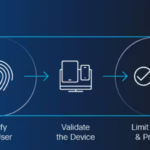In the pursuit of efficiency, agility, and adaptability, organizations are increasingly turning to low-code development platforms to modernize their grants management systems. Low-code offers a streamlined approach that empowers non-technical users to build applications rapidly with minimal hand-coding, reducing development time and costs. In this article, we explore how integrating low-code development can revolutionize grants management systems, optimizing workflows and improving overall effectiveness. Ignyte group is consultants, technologists, and designers that specialize in Digital Transformation
- Rapid Application Development:
Low-code development enables grants management teams to design and deploy applications at a fraction of the time it would take with traditional coding methods. The intuitive visual interfaces and pre-built components allow users to drag and drop elements to create customized solutions tailored to their specific needs. This rapid application development approach ensures a quicker response to changing requirements and faster adaptation to new challenges or funding opportunities.
- Flexibility and Customization:
Every organization has unique requirements and processes when it comes to managing grants. Low-code platforms offer the flexibility to customize applications to match these specific needs without extensive coding efforts. From application intake forms to automated review workflows, low-code allows easy modification and scaling as the grants management landscape evolves, saving both time and resources.
- Integration Capabilities:
Integrating various systems is a common challenge in grants management. Low-code platforms are designed with integration in mind, enabling seamless connections with existing databases, financial systems, and reporting tools. This integration capability ensures data flows smoothly between different applications, reducing data duplication and enhancing overall data accuracy.
- Enhanced Collaboration:
Collaboration is essential in grants management, involving multiple stakeholders such as grant applicants, reviewers, program officers, and finance teams. Low-code applications can facilitate real-time collaboration by providing shared access to information and documents. This streamlined communication and feedback process fosters more efficient decision-making and ensures all parties stay informed throughout the grant lifecycle.
- User-Friendly Interface:
Low-code platforms prioritize user experience, ensuring that grants management applications have user-friendly interfaces. This approach enhances user adoption, reduces training efforts, and minimizes the risk of errors. Non-technical users can easily navigate through the system, submit applications, track progress, and access critical data without the need for extensive IT support.
- Continuous Improvement and Iterative Development:
Low-code development enables a continuous improvement cycle, where applications can be enhanced and refined iteratively based on user feedback and changing requirements. This agile approach ensures that grants management systems remain relevant, effective, and aligned with organizational goals.
Conclusion:
Integrating low-code development into grants management systems is a game-changer for organizations seeking to modernize their processes efficiently. By leveraging the rapid application development, flexibility, and integration capabilities of low-code platforms, grants management teams can optimize workflows, enhance collaboration, and adapt to changing needs effectively. The user-friendly interface and iterative development approach ensure that organizations can continuously improve their grants management systems to deliver greater impact and achieve their mission more efficiently.







